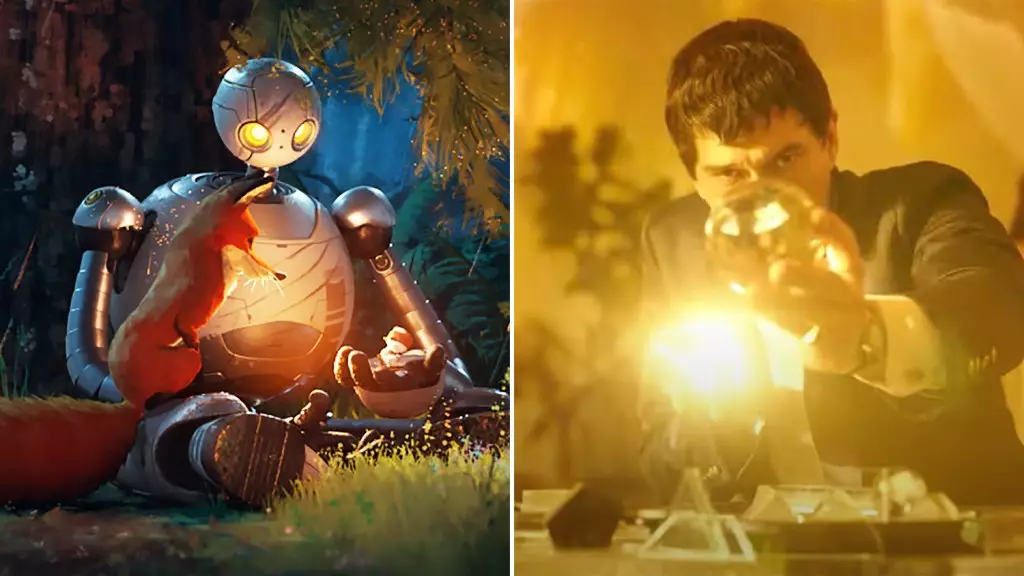In the ever-evolving world of cinema, box office performance serves as a critical barometer for the health of the industry and the popularity of films among audiences. Recent events at the box office unveil much about viewer preferences, production costs, and marketing strategies, underscoring a dynamic atmosphere filled with both triumphs and disappointments. This article delves into two recent releases, DreamWorks Animation’s “The Wild Robot” and Francis Ford Coppola’s ambitious endeavor “Megalopolis,” analyzing their forecasts, audience reception, and implications for the industry.
DreamWorks Animation’s “The Wild Robot” has made a robust entry into the theatrical market, showcasing an impressive preliminary gross of $1.95 million from previews alone. Premiering in approximately 3,000 theaters, the film is tentatively expected to dominate the weekend box office with an anticipated take of over $20 million. This promising start positions “The Wild Robot” favorably in comparison to other recent releases from the studio, most notably “Trolls Band Together,” which garnered $1.3 million in previews yet struggled to exceed an opening day total of $9.3 million.
The strong reception from audiences, particularly reflected in the high PostTrak scores—5 stars from general viewers, 4.5 stars from parents, and perfect scores from children—suggests that the film resonates well across demographics. Among viewers last night, general audience engagement consisted of 72% overall, with parents making up 18% and children under 12 representing 10%. Data reveal a gender disparity, with more men in attendance, while family dynamics pointed to a predominance of mothers participating in this event. This insightful demographic breakdown is crucial for understanding future marketing efforts and audience targeting.
“The Wild Robot” is not merely a commercial endeavor; it is an adaptation of a best-selling children’s novel by Peter Brown. Its production budget sits at a competitive $78 million, excluding promotion and advertising expenditures. The film’s narrative and visual appeal underline contemporary trends where animated features succeed in drawing audiences, especially families, to theaters.
In stark contrast, “Megalopolis,” an ambitious cinematic vision from the renowned director Francis Ford Coppola, has not fared as well. The film generated only $770,000, which includes proceeds from a special IMAX event, indicating a rocky reception. This performance draws parallels to previous underperforming projects, including Kevin Costner’s “Horizon,” which struggled despite considerable financing. Speculation suggests “Megalopolis” may face a disappointing opening weekend, with projections estimating a total take of between $5 million and $7 million.
Coppola’s cinematic endeavors have historically been marked by a unique artistic vision. Yet, the financial backing for “Megalopolis”—estimated at $120 million, self-financed through Coppola’s production company—has birthed concerns over profitability. Despite this, Lionsgate serves solely as the distributor, with Coppola managing marketing costs projected between $15 million and $17 million. The question remains whether Coppola’s decades of acclaim will translate into box office success once again, or if this venture will echo challenges faced by artists whose films struggle in a rapidly shifting landscape.
Over the years, veteran directors like Coppola have increasingly confronted the realities of the film market, emphasizing the importance of strategic distribution and audience engagement rather than solely relying on artistic merit.
The contrasting fortunes of these recent films illuminate significant trends in the industry. Audiences overwhelmingly lean toward family-friendly animated features, as evidenced by “The Wild Robot,” whilst more ambitious adult-targeted narratives, such as “Megalopolis,” face uphill battles amidst changing consumer preferences and competitive cinematic offerings. Moreover, the responses gathered via platforms like Rotten Tomatoes further underscore public sentiment regarding each release, providing critical insights for studios looking to optimize future projects.
Furthermore, the ongoing challenges posed by external factors, such as severe weather conditions impacting viewer turnout, highlight uncertainties that can affect ticket sales dramatically. The repercussions of Hurricane Helene, which has disrupted power across millions of homes, can substantially dampen box office revenues and create volatility in an already unpredictable environment.
“The Wild Robot” exemplifies a potential new gold standard in animation’s appeal, while “Megalopolis” serves as a cautionary tale for filmmakers venturing into high-budget artistry without market assurances. The evolving landscape of cinema requires industry stakeholders to adapt deftly; understanding audience behavior and economic realities will be crucial elements in shaping the box office trajectory moving forward.
